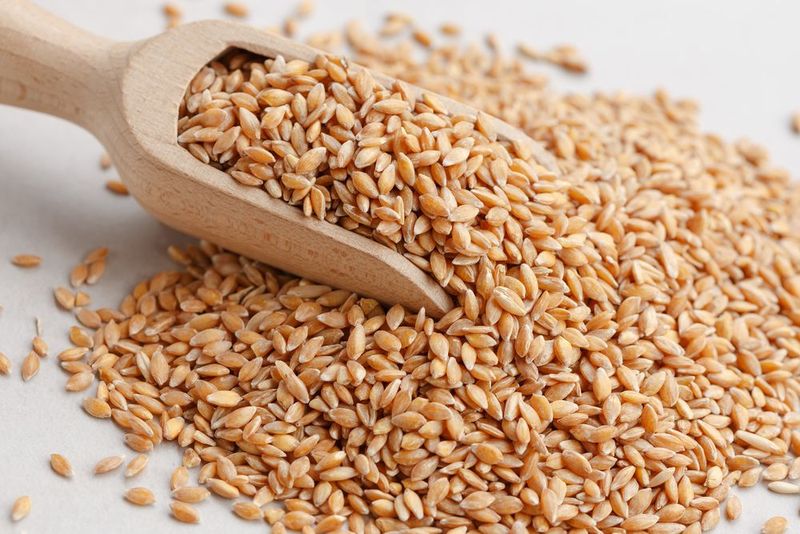Zimbabwe plans to simultaneously export and import wheat

In August, the Zimbabwean government revealed plans to export around 60,000 tonnes of surplus wheat stocks in 2024. This decision comes as the country anticipates another successful wheat harvest this year, resulting in an excess supply beyond domestic needs. At the same time, Zimbabwe is among six African countries that are expected to import 50,000 tonnes of wheat from Russia. This has left some people confused.
According to a report from the Ministry of Lands, Agriculture, Fisheries, Water and Rural Development, Zimbabwe is expecting to yield 420,000 tonnes of wheat from its winter crop. This indicates a positive outlook for the country’s agricultural sector in terms of wheat production. Read the report:
The country planted 90 000 hectares of wheat in the current winter cropping season from which we expect 420 000 tonnes of wheat, which is about 60 000 more than the national requirement.
Because of the targeted harvest, the country will be self-sufficient for a second year running and we will be able to export wheat to our sister countries in Africa.
Agronomist Anderson Magura affirms that Zimbabwe’s recent agricultural achievements, notably in wheat and maize production, are accurately represented by the projected harvest figures. Previously, the country experienced bread price increases due to shortages of both local and imported wheat, forcing millers to heavily depend on imported wheat funded through the black market.
Meanwhile, at the Russia-Africa Economic and Humanitarian Forum in St Petersburg, Russian President Vladimir Putin pledged to provide grain aid of up to 50,000 tons to Burkina Faso, Zimbabwe, Mali, Somalia, Eritrea, and the Central African Republic within the next three to four months. While discussing the halted Black Sea grain deal, Putin said:
Our country will continue supporting needy states and regions, in particular, with its humanitarian deliveries. We seek to actively participate in building a fairer system of distribution of resources. We are taking maximum efforts to avert a global food crisis.
I have already said that our country can replace Ukrainian grain, both on a commercial basis and as grant aid to the neediest African countries, more so since we expect another record harvest this year.
On Wednesday, Russia announced that Turkey has tentatively agreed to handle one million metric tonnes of grain to be sent to Africa at a discounted price. This arrangement is supported financially by Qatar. Russia proposed this plan after terminating a previous deal in July that allowed Ukraine to safely ship grain from its Black Sea ports in an effort to stabilize rising global food prices, which were worsened by Russia’s invasion. Deputy Foreign Minister Alexander Grushko told reporters:
All agreements in principle have been reached. We expect that in the near future we will enter into working contacts with all parties to work out all the technical aspects of the scheme for such deliveries.
Turkey will handle the onward export of Russian grain, but the details of its role are unclear. Russia terminated the prior deal due to obstacles to its grain exports caused by sanctions and dissatisfaction with grain distribution to poorer countries.
Why Is Zimbabwe Simultaneously Exporting And Importing Wheat
For the past two decades, Zimbabwe has been blending imported wheat from Russia, Canada, and Australia with local wheat to produce bread flour. Blending occurs at various points in the supply chain, taking into account factors such as the original grain quality, desired final product quality, and contractual obligations. Zimbabwe imports approximately 30% of its total hard wheat requirements to blend different varieties and produce high-quality flour for delicious, long-lasting bread, according to Tafadzwa Musarara, Chairman of the Grain Millers Association of Zimbabwe. He said:
The quality of our local wheat is good, compared to the regional wheat and it is doing well in the production of biscuits and a number of other products. In relation to bread, we have to mix varieties to give us good durable bread such as Russian wheat flour.
The National Bakers Association of Zimbabwe (NBAZ) recently expressed concerns about the quality of locally produced wheat. According to NBAZ Vice President Sharon Maparura, the desired ratio is roughly 70% local wheat and 30% imported wheat, but shortages of foreign currency for importing blending wheat often result in a higher proportion of local wheat, impacting flour quality. This requires additional costs for enzymes and additives, ultimately affecting consumers.
Tafadzwa Musarara noted that instances of poor-quality local wheat in Zimbabwe are rare and usually caused by limited water for irrigation during wheat production.
Read also
Wheat in Southern Brazil Impacted by Dry Weather and Frosts
Oilseed Industry. Leaders and Strategies in the Times of a Great Change
Black Sea & Danube Region: Oilseed and Vegoil Markets Within Ongoing Transfor...
Serbia. The drought will cause extremely high losses for farmers this year
2023/24 Safrinha Corn in Brazil 91% Harvested
Write to us
Our manager will contact you soon



